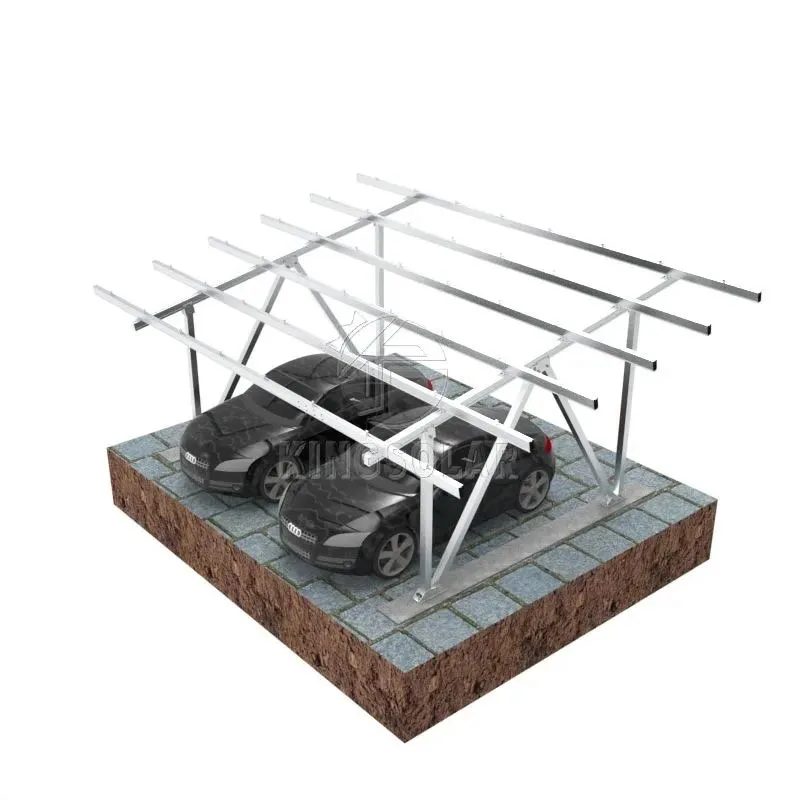How Can Solar Carport Mounts Redefine Clean Energy and Parking Spaces?
2025-09-28
Across the globe, renewable energy adoption is no longer a distant goal—it is an urgent necessity. One solution that has been gaining strong traction in recent years is the solar carport mount. Unlike traditional rooftop solar systems, a solar carport mount integrates two functions into one: it provides shade and protection for vehicles while simultaneously generating clean solar power. For property owners, businesses, and public institutions, this dual-purpose innovation represents an efficient use of land that would otherwise remain underutilized.
A solar carport mount is essentially a steel or aluminum structure designed to hold solar panels above parking spaces, transforming these areas into micro power plants. This model is highly adaptable, supporting both small-scale residential carports and large-scale commercial installations that can cover hundreds of vehicles.
Why does this matter? Consider the following:
-
Urban land is limited. Carports are spaces already designated for parking. Utilizing them for energy generation requires no extra land acquisition.
-
Energy demand is rising. With electric vehicle (EV) adoption growing rapidly, combining parking infrastructure with solar power creates a direct charging solution.
-
Sustainability goals are pressing. Businesses, universities, and municipalities are under increasing pressure to cut carbon emissions. Solar carports offer a visible and practical way to demonstrate commitment to sustainability.
How Do Solar Carport Mounts Work in Practice?
The operation of a solar carport mount is straightforward yet highly engineered. It consists of a support structure, typically galvanized steel or anodized aluminum, which is anchored securely into the ground. Above this structure, solar photovoltaic (PV) modules are mounted at optimized angles to maximize sun exposure. The electricity generated is then routed through inverters and integrated into the property’s electrical system or grid.
Here is a technical overview of key product parameters for a standard commercial-grade solar carport mount:
| Parameter | Specification |
|---|---|
| Material | Hot-dip galvanized steel / Anodized aluminum |
| Panel Orientation | Landscape or portrait |
| Tilt Angle | 5°–30° adjustable depending on region |
| Maximum Wind Load | Up to 60 m/s (tested and certified) |
| Maximum Snow Load | Up to 1.5 kN/m² |
| Span Between Columns | 4m – 6m (customizable) |
| Waterproofing Options | Optional integrated rainwater management system |
| Compatibility | Monocrystalline or polycrystalline PV modules |
| Ground Fixation Method | Concrete foundation or ground screw system |
| Service Life | 25+ years with anti-corrosion coating |
| Maintenance Requirement | Minimal; periodic inspection recommended |
In practice, these systems are engineered not only to generate energy but also to withstand local environmental challenges such as high winds, heavy snow, or extreme heat.
For example, in coastal areas prone to corrosion, galvanized steel with anti-rust treatment is prioritized. In colder climates, the snow load resistance ensures long-term reliability. Additionally, the tilt angle flexibility helps maximize solar yield depending on latitude, further improving return on investment.
But how do these installations translate to everyday use? Picture a large supermarket chain that installs solar carport mounts across its parking lot. Every shopper benefits from shaded parking, while the company slashes utility bills and strengthens its green credentials. For residential homeowners, a two-car solar carport mount not only protects vehicles but also offsets a significant portion of household electricity consumption.
Why Should Businesses and Homeowners Choose Solar Carport Mounts?
The appeal of solar carport mounts extends far beyond energy generation. Their benefits span financial, environmental, and practical dimensions. Let us consider the main reasons:
Optimal Land Utilization
Unlike ground-mounted solar farms that consume valuable land, carport mounts capitalize on existing parking areas. This allows property owners to maximize ROI without additional real estate costs.
Dual Functionality
Every parking spot covered with a solar carport mount provides both shade for vehicles and renewable electricity for the grid. Drivers benefit from cooler vehicles in summer, while property owners generate steady energy savings.
EV Charging Integration
With EV adoption accelerating globally, businesses and municipalities are racing to provide charging infrastructure. By integrating EV charging stations directly under solar carports, organizations create a seamless experience for drivers while promoting sustainable mobility.
Reduced Energy Costs
Solar carports produce electricity during peak sunlight hours, which often align with peak energy demand. This reduces reliance on the grid when utility rates are highest, cutting operational costs substantially.
Sustainability and Branding
Consumers today are more conscious than ever about sustainability. A shopping mall, university, or corporate headquarters that installs solar carports not only lowers carbon emissions but also demonstrates environmental leadership. This visibility can enhance brand value, attract eco-conscious clients, and meet regulatory sustainability benchmarks.
Long-Term Investment
Although initial installation costs may seem higher than rooftop solar, carport systems are designed for durability. With service lifespans exceeding 25 years, coupled with reduced maintenance, the return on investment becomes highly competitive over time.
What Does the Future Hold for Solar Carport Mounts?
The global transition to renewable energy is not slowing down. As urban centers expand and energy demand grows, solar carport mounts will increasingly become a staple in both residential and commercial settings. Let us explore future trends and expectations:
Smart Energy Integration
Future solar carports will go beyond simply generating electricity. They will integrate with smart grids, battery storage, and demand response systems, enabling real-time energy optimization and backup power during outages.
Expansion in Public Infrastructure
Governments worldwide are incentivizing renewable energy deployment in public spaces. Expect to see solar carport installations at airports, train stations, schools, and hospitals, further embedding clean energy into daily life.
A Key Role in EV Ecosystems
As EV adoption grows, solar-powered carports with integrated charging stations will play a central role in urban mobility planning. This will reduce strain on national grids while promoting self-sufficient charging networks.
Architectural and Design Enhancements
Next-generation solar carport mounts will feature more aesthetic and modular designs, catering to modern architectural demands. Glass-glass modules, integrated lighting, and rainwater harvesting systems will become standard.
Cost Reductions Through Innovation
With manufacturing efficiencies and global adoption scaling up, costs of solar panels and carport structures are steadily declining. This means solar carports will become accessible not only to large corporations but also to small businesses and households.
The trajectory is clear: solar carport mounts are moving from being niche solutions to mainstream clean energy infrastructure. They will help cities manage rising energy demand, support EV adoption, and improve the sustainability profile of everyday spaces.
Frequently Asked Questions (FAQ)
Q1: How long does it take to install a solar carport mount?
A typical residential installation for a two-car solar carport mount can take around 3–5 days depending on local permitting and site preparation. For larger commercial projects covering dozens or hundreds of parking spaces, installation may take several weeks. The timeline is influenced by foundation work, electrical integration, and utility approvals.
Q2: What maintenance is required for solar carport mounts?
Maintenance is minimal. Regular inspections are recommended twice a year to ensure bolts and connections remain secure. Panels may require occasional cleaning to remove dust or debris, especially in regions with limited rainfall. The structural materials, typically galvanized steel or anodized aluminum, are engineered to resist corrosion, ensuring long-term durability with minimal upkeep.
Solar carport mounts represent a convergence of practicality and sustainability. By transforming parking lots into energy-generating assets, they maximize land use, reduce carbon footprints, and future-proof infrastructure for the growing era of electric mobility. Their ability to combine everyday convenience with cutting-edge renewable energy makes them a cornerstone of modern energy planning.
At Kingsolar, we are dedicated to delivering high-quality solar carport mounting solutions that meet international standards, withstand diverse environmental conditions, and provide long-term value for both businesses and homeowners. If you are ready to explore how solar carport mounts can benefit your property, contact us today for tailored consultation and reliable project support.



